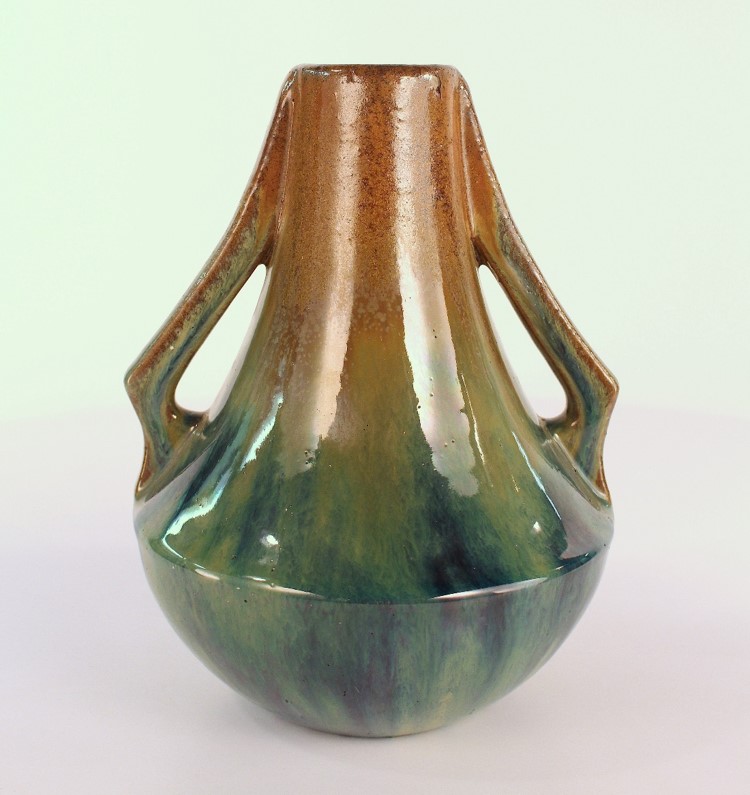Fulper Pottery Company grew out of Hill Pottery, which was founded in 1814 in Flemington, New Jersey. Hill Pottery used local red earthenware clay to make utilitarian objects such as drainpipes, storage crocks, and jars. When Hill Pottery owner Samuel Hill died in 1858, his employee Abram Fulper bought most of Hill’s remaining stock and took over the company. Under Abram’s leadership, the company continued to produce utilitarian wares, including crocks and other fireproof cookware. Abram passed away in 1881, at which time his four sons inherited the company, changing its name to G.W. Fulper & Brothers and then to Fulper Brothers, before finally incorporating it as Fulper Pottery Company in 1899. Fulper Pottery Company began producing art pottery under the leadership of Abram Fulper’s grandson, William H. Fulper II. William had a gift for marketing as well as a strong awareness of trends, and he recognized the important role ceramics played in the Arts and Crafts Movement. Fulper Pottery released its first line of art pottery, known as Vasekraft, just in time for the holiday gift-giving season in 1909. In 1910, William hired famous ceramic engineer J. Martin Stangl, and he greatly expanded the company’s product lines and developed the distinctive glazes that set Fulper Pottery apart from the countless other art potteries in the United States. With Stangl’s innovative designs and unique glaze techniques, Fulper Pottery gained an international reputation. In 1915, the company received the Gold Medal of Honor at the Panama Pacific International Exposition in San Francisco for a monumental vase covered in mirror black, smoke green luster, and flambé glazes. Production continued to expand throughout the 1920s, but a catastrophic fire in 1929 destroyed the company’s main plant and the onset of the Great Depression in the 1930s led to a significant decline in sales. Stangl purchased Fulper Pottery in 1930 and continued production on a much smaller scale under his name. Handled Vase was likely made sometime between 1917 and 1923, and the geometric, angular handles show an early influence from the Art Deco style. A Fulper Pottery catalog from 1923 lists a vase of this same shape and glaze coloring (described as “copper dust with green flambé”) as selling for $7.50. Handled Vase is currently on view in Socially Gifted: 75 Years of Gifts from the Social Art Club through June 30, 2019.
-Michael Brussel, Curatorial Intern and Steffi Chappell, Curatorial Assistant


